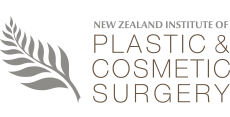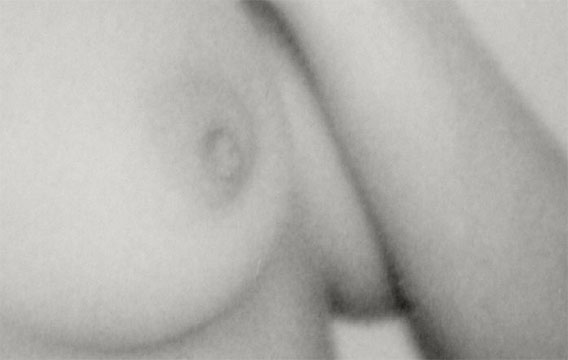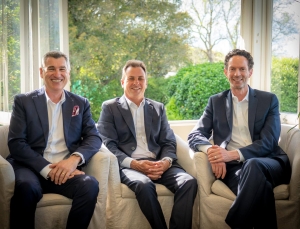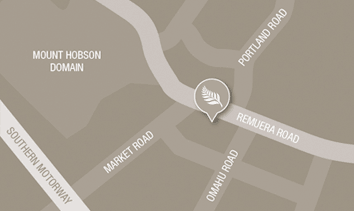Our Plastic Surgeons
Skilled and experienced plastic surgery experts
All four specialists are New Zealand trained plastic and cosmetic surgeons with a vast surgical experience over many years and many thousands of patients.
Frequently Asked Questions
What are the first steps?
Your NZIPCS plastic surgeon will review your situation and factors associated with your breast condition , chemotherapy, radiation therapy, and your general medical health.
Reconstructive options will be covered in detail during your consultation, so that you and your surgeon can make an educated assessment of the various choices available, and together decide the best one for you.
Photographs will be taken before and after your surgery to plan the procedure and to record your progress.
What does the surgery involve?
Breast reconstruction is usually a two-stage operation. The first stage aims to establish a breast shape, while the second stage aims to refine the result, improving symmetry between the two breasts by making adjustments to the new breast or normal breast. It may also include nipple-areola reconstruction although sometimes the nipple-areola reconstruction is completed during a third stage.
There are generally two main categories of breast reconstruction surgery; either using an implant or tissue expander, or using tissue from your own body. Both methods have advantages and disadvantages and sometimes a combination of methods is necessary.
What are the advantages and disadvantages of breast reconstruction with an implant?
When reconstructing a breast with an implant, a silicone gel prosthesis is most commonly used. The advantage of this technique is that the procedure is less complex, with a shorter recovery time. The operation may be carried out as an outpatient or overnight stay procedure.
The result is a breast that can have an excellent shape and a relatively soft feel to the touch. The best results are achieved when the opposite side is also augmented with an implant to improve symmetry.
The disadvantage is that radiotherapy can increase complications with implants and, in the long term, further surgery is usually necessary.
How does the tissue-expander method work?
This method takes advantage of the principle that skin is expandable (like an abdomen during pregnancy). An inflatable implant is placed under the skin (and/or muscle) and is gradually increased in volume by adding saline over a few weeks or months. This regular expansion is a simple, painless procedure that requires no anaesthetic.
In some cases the expander may be deliberately over inflated by about 10 percent and left for three to four months to help achieve a more natural breast shape. With some devices, once the final breast size is reached the fill valve can be removed and the tissue expander is simply left in place as an implant that serves as the final breast. However, in most cases a further operation is necessary to remove the expander. Nipple areola reconstruction can often be done at the same time.
What are the advantages and disadvantages of the ‘tissue expander’ method?
With the use of a tissue expander, breast reconstruction can achieve a more natural, shapely breast, as the tissue expander takes advantage of the skin’s ability to stretch. This gradual process takes place over a six to 10 week period.
The disadvantage of any implant reconstruction is that in every case the body forms a shell of scar tissue around the implant. In some cases, contraction of this scar can result in a firm, misshapen breast (capsular contracture ) which can be corrected through additional surgery, but may recur.
The other main disadvantage of breast reconstruction with an implant is the risk of implant related infection. This might require removal of the implant for some months until the infection has settled.
Modern implants are made to very high standards and device failure is rare. During your consultation your surgeon will discuss detailed information on the risks of breast implants.
How does autogenous (own tissue) breast reconstruction work?
This method of breast reconstruction uses tissue (fat, muscle and skin) from another part of your body. Tissue is most commonly taken from the abdomen or back and transferred onto the chest wall to fashion a new breast.
What are the advantages and disadvantages of this method?
The obvious advantage of this method is a breast that is naturally soft and composed entirely of your own tissue. The breast can also be shaped or sculpted to produce a closer match to the opposite side. Another advantage is that once successfully completed, this a ‘permanent’ form of reconstruction.
The scar tissue that is associated with implants is not a problem with tissue reconstruction. The major disadvantage of tissue reconstruction is that it is a more complex operation requiring a longer recovery period.
Three different methods of autogenous reconstruction are detailed below:
TRAM Flap
The TRAM flap (Transverse Rectus Abdominis Myocutaneous) technique uses tissue from the lower abdomen and is similar to a ‘tummy tuck’ operation in terms of recovery.
Most commonly, the tissue is kept attached to a strip of muscle and passed through a tunnel under the upper abdominal skin to the chest wall, where the new breast is made. The abdominal wound is then closed similar to a tummy tuck, resulting in a flatter, more shapely abdomen.
Are there any risks involved?
Potential complications associated with this operation include partial non-survival or loss of the new breast due to problems with blood supply, and delayed healing of the abdominal wound. These complications are more common in cigarette smokers, obese women, and women who already have multiple surgical scars on their abdomen.
Microvascular ‘Free’ Flap
In some situations, including patients at high risk of complications with a conventional TRAM flap, the tissues from the abdomen or from the buttock can be removed from the body and transferred to the chest wall for reconstruction using microvascular techniques.
What does the surgery involve?
The blood vessels supplying the tissues are first disconnected from their original supply. After transfer to the chest they are reconnected to new blood vessels on the chest, using an operating microscope (microsurgery) to re-establish the blood supply to the flap.
As mentioned above, the tissue in the lower abdomen can be used in a conventional fashion to reconstruct the breasts, but this tissue also can be transferred as a free flap to the chest wall for reconstruction. The DIEP free flap is a variant on this theme that takes abdominal fat and skin without sacrificing muscle.
Latissimus dorsi Flap
Skin, fat and muscle from the back are transferred onto the chest through a tunnel in the armpit/lateral chest. Usually this flap does not provide sufficient volume alone to match the opposite breast and is used in combination with a breast implant.
The flap itself is very reliable and robust hence complications with its blood supply or survival are rare. Scarring on the back donor site can be minimized in some cases with endoscopic surgery techniques.
What factors determine which type of flap will be used?
1) The amount of fat and skin required for the reconstruction.
2) The amount of fat and skin available in the donor site.
3) Patient and surgeon preference.
Are there any potential risks or complications?
Taking tissue from another part of the body will result in scarring, contour changes, and some decreased function in the donor site areas. There are a number of potential complications associated with this type of surgery, which your surgeon will discuss in detail with you.
Is it possible to have an immediate breast reconstruction at the same time as the masectomy?
In the past it was common practice to wait an unspecified period of time before carrying out breast reconstruction. A modern trend is to perform the breast reconstruction at the same time as the mastectomy. This has several advantages, including decreased hospitalisations, fewer operations, and less expense. Most importantly, women find that the psychological distress associated with breast cancer and mastectomy is lessened with an immediate reconstruction.
Another important innovation in breast reconstruction is that of the skin-sparing mastectomy. More and more breast cancers are being discovered at an early stage, often as the result of a mammogram. When the cancer is very small, the breast skin overlying it is usually not involved with the tumour. Therefore it is not necessary to remove an excessive amount of skin to perform a mastectomy. This is a tremendous advantage to the patient and reconstructive surgeon in helping to achieve symmetry of size and shape.
Can I still have chemotherapy after a breast reconstruction?
Breast reconstruction should not interfere with subsequent chemotherapy or radiation therapy if required, nor does it have any bearing on the subsequent behaviour of the breast cancer. Occasionally surgical complications can delay the start of other treatments.
How long will recovery take?
This obviously depends very much on which type of procedure is undertaken. The anticipated recovery period may play a part in your decision as to which method of reconstruction is best for you. Your surgeon will give you details on what to expect after your breast reconstruction.
For more information
For more information on breast cancer and breast reconstructive surgery, the following books are highly recommended: A Woman’s Decision, 3rd edition, by K Berger and Dr J Bostwick III (click image for further details); and Plastic and Reconstructive Surgery of the Breast – A Surgical Atlas, by Bohmert and Gabka, 1997.
How much will it cost?
More detailed information can be obtained during a consultation with one of our plastic surgeons. Please contact the Institute for a consultation.
Request a complimentary consultation
Meet with our nurses for a complimentary, no obligation cosmetic surgery consultation to discuss procedures, processes and costs




